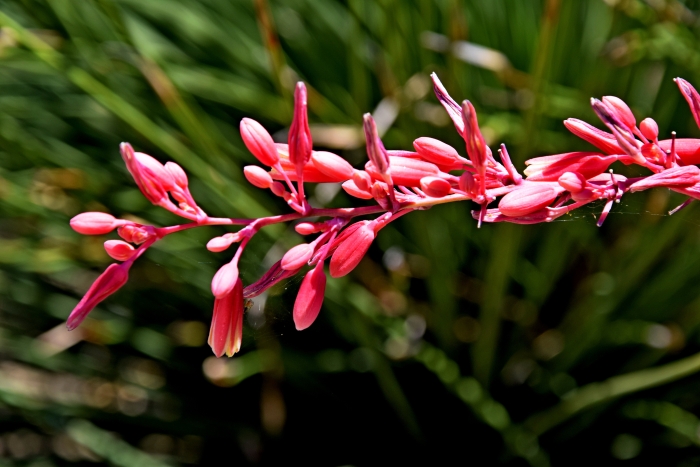Red Yucca
(Hesperaloe parviflora)
Red Yucca (Hesperaloe parviflora)
/
/

Krzysztof Golik
CC BY-SA 4.0
Image By:
Krzysztof Golik
Recorded By:
Copyright:
CC BY-SA 4.0
Copyright Notice:
Photo by: Krzysztof Golik | License Type: CC BY-SA 4.0 | License URL: https://creativecommons.org/licenses/by-sa/4.0 | Uploader: Tournasol7 | Publisher: Wikimedia Commons | Title: Hesperaloe_parviflora002.JPG | Notes: == {{int:filedesc}} == {{Information |Description=Hibiscus coccineus |Source=[https://www.flickr.com/photos/peganum/28570877555/ Hibiscus coccineus] |Date=2016-07-26 16:24 |Author=[https://www.flickr.com/people/26698606@N03 peganum] from Small Dole, En... |






































Estimated Native Range
Summary
Hesperaloe parviflora, commonly known as Red Yucca, is an evergreen succulent native to the Chihuahuan desert of Texas and northeastern Mexico. It thrives in arid environments, rocky slopes, and grasslands, often in calcareous soils. This plant forms clumps 3–6 ft (0.91–1.83 m) high and wide with narrow, leathery leaves that have a fringe of white threadlike hairs along their edges. From late spring to mid-summer, Red Yucca produces showy, red or yellow tubular flowers on branching flower stalks (inflorescences) up to 5 ft (1.5 m) tall, which are highly attractive to hummingbirds.
Red Yucca is valued for its drought tolerance, heat resistance, low maintenance, and its ability to attract wildlife, making it a popular choice for xeriscaping. It is used in public and private gardens throughout California and the Southwestern United States, often as an ornamental feature or as a spineless alternative to Agave and Yucca species. It is well-suited for full sun exposure and requires very low to low amounts of water, thriving in well-drained soils. While it is generally pest-free, overwatering can lead to root rot. Red Yucca is not a true yucca, and its lack of spines makes it a safer choice for gardens with pets or children.CC BY-SA 4.0
Red Yucca is valued for its drought tolerance, heat resistance, low maintenance, and its ability to attract wildlife, making it a popular choice for xeriscaping. It is used in public and private gardens throughout California and the Southwestern United States, often as an ornamental feature or as a spineless alternative to Agave and Yucca species. It is well-suited for full sun exposure and requires very low to low amounts of water, thriving in well-drained soils. While it is generally pest-free, overwatering can lead to root rot. Red Yucca is not a true yucca, and its lack of spines makes it a safer choice for gardens with pets or children.CC BY-SA 4.0
Plant Description
- Plant Type: Succulent
- Height: 3-5 feet
- Width: 4-6 feet
- Growth Rate: Moderate
- Flower Color: Red, Pink
- Flowering Season: Summer, Fall, Spring
- Leaf Retention: Evergreen
Growth Requirements
- Sun: Full Sun
- Water: Very Low, Low
- Drainage: Medium, Fast
Common Uses
Bee Garden, Bird Garden, Border Plant, Butterfly Garden, Deer Resistant, Drought Tolerant, Erosion Control, Fire Resistant, Hummingbird Garden, Low Maintenance, Potted Plant, Rabbit Resistant, Rock Garden, Salt Tolerant, Showy Flowers, Street Planting
Natural Habitat
Chihuahuan desert of Texas and northeastern Mexico
Other Names
Common Names: Red Hesperaloe, Red-Flower Hesperaloe, Redflower False Yucca, Hummingbird Yucca, Samandoque
Scientific Names: , Hesperaloe parviflora, Yucca parviflora, Aloe yucciflora, Hesperaloe parviflora var. parviflora,
GBIF Accepted Name: Hesperaloe parviflora (Torr.) J.M.Coult.